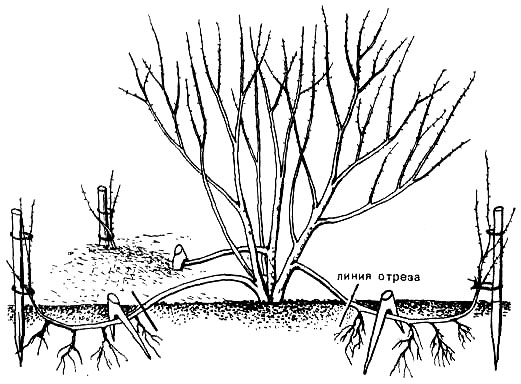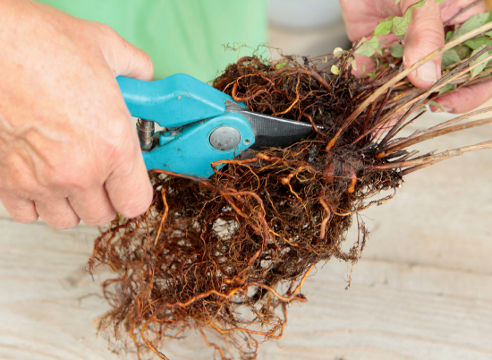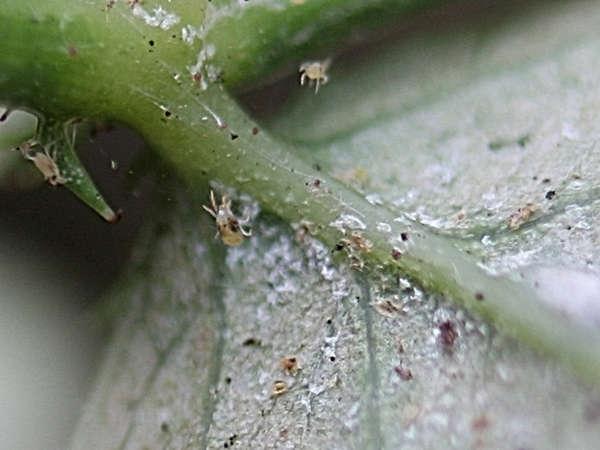Content
Spiraea Darts Red is an undemanding deciduous shrub, characterized by abundant flowering over a very long period of time. In landscape design, this variety is especially valued for its high frost resistance and immunity to air pollution, which allows it to be grown within the city.
A description of spirea variety Darts Red and a photo of the bush are presented below.
Description of spirea Darts Red
Spiraea Dart's Ded (Spiraea japonica Dart's Ded) is a low-growing plant with a compact crown. The height of the bush does not exceed 80 cm, the diameter is on average 90-100 cm. The average annual growth of spirea varies from 10 to 20 cm depending on growing conditions.
The shoots of the Darts Red variety are straight, but highly branched, as a result of which the structure of the bush is very dense - there are practically no gaps between the branches. Young shoots are painted a rich red color, which over time turns into a light brown hue.
The leaves of the variety are small, lanceolate, slightly elongated. The color of Darts Red spirea foliage changes over time: young leaves are pale, pinkish-red, however, soon the leaf blade acquires a bright green hue.
The color of the flowers varies from soft pink to bright ruby. They form large flat inflorescences on the shoots of the current year. The variety blooms from June to August. Repeated flowering is possible, but with less intensity. It falls at the end of September-October. The fruits of Darts Red spirea are presented in small leaflets.
The root system of the plant is well developed and highly branched.
Planting and caring for Japanese spirea Darts Red
There is nothing complicated in planting Darts Red spirea and subsequently caring for the bush. Like most spirea varieties, this plant grows best in well-lit areas. In such conditions, it blooms profusely and actively forms young shoots, however, with light shade, Darts Red also develops well. However, the lack of light affects the color of the foliage of the bush and the richness of the inflorescences - in the shade, spirea flowers can become faded. In addition, the branches become lignified much more slowly due to a lack of light.
Spirea is undemanding in terms of soil type, although it prefers moderately moist, loose soil of medium acidity. It is also possible to plant on poor soils, but in this case the lack of nutrients will inhibit the growth of the shrub. It is recommended to correct poor soil before planting by adding organic fertilizers.
Preparation of planting material and site
Japanese spirea Darts Red quickly takes root in almost all soils, so it is not necessary to prepare a site for planting, especially if the soil on the site is loose and fertile. Only if the soil is very scarce is it recommended to dig up the area and apply organic fertilizers 2-3 weeks before planting.
Planting material is carefully inspected before being placed in open ground - if there is mechanical damage, the plants can easily become infected with fungus. In addition, it is necessary to trim off the roots that escape from the general mass. To do this, use sharp garden shears, which should leave an even cut. If you correct the root system with a blunt instrument, small breaks may form on the roots. Because of this, the seedling may not take root in open ground.
Spiraea shoots can also be slightly shortened, but not more than 30%.
Planting Japanese spirea Darts Red
The planting scheme for Darts Red spirea is quite simple:
- A planting hole is dug in the selected area. The depth and diameter of the hole depend on the size of the seedling's root system - it should fit freely inside.
- Drainage is placed at the bottom of the hole. To do this, use gravel, broken bricks or clay shards.
- A soil mixture based on peat, turf soil and fine-grained river sand, taken in a 1:1:1 ratio, is poured over the drainage layer. They form a low hill from it.
- A seedling is placed on this hill, carefully distributing its roots along the slopes. The ends of the roots should not rest against the walls of the planting hole.
- The root system is carefully covered with the top layer of soil from the garden plot. After deepening the seedling, the root collar of the spirea should be located at soil level.
- Immediately after planting, the area near the trunk is lightly pressed down. A shallow furrow is dug along the perimeter, in which moisture will subsequently accumulate during watering.
- After this, the plantings are watered moderately.
Watering and fertilizing
The drought resistance of the Darts Red variety is average - the shrub does not tolerate prolonged heat. Young seedlings are especially vulnerable to drought, so the bushes are watered regularly.
It is not necessary to feed the spirea, however, in conditions of poor soil, you can fertilize the tree trunk area with liquid fertilizers. To do this, fermented mullein or herbal infusion is added to the soil. Recommended timing: early spring to mid-summer.
Trimming
Japanese spirea is pruned in the spring. To do this, remove damaged and dried branches. Old bushes are pruned to the very base in order to rejuvenate the plant. Such pruning will provoke intensive growth of young shoots.
Preparing for winter
Despite the fact that Darts Red spirea is a frost-resistant garden crop, it is recommended to cover annual seedlings for the winter, especially in the Northern regions.
In the middle zone, snow is used as cover, which is thrown on the bush in a thick layer. Where winters are especially harsh, plants are hilled up and mulched with peat before the onset of the first frost. Spiraea shoots are tied and carefully bent to the ground, laid on previously laid out burlap. To prevent the branches from unbending, they are fixed to the ground using special brackets.Then the tied shoots are covered with insulating cloth.
You can learn more about the features of planting Darts Red spirea from the video below:
Reproduction
Most often, spirea of the Darts Red variety is propagated by vegetative methods:
- layering;
- cuttings;
- in divisions.
It is also possible to propagate shrubs with seeds, but this method is not particularly popular.
The easiest way to propagate spirea is by removing shoots from the mother bush. The algorithm for the formation of layering is as follows:
- In spring, a branch is selected from the bush at the bottom and bent, but so that it does not break.
- The end of the shoot is buried in the ground and fixed with a heavy object or bracket.
- The cuttings are watered from time to time, just like the parent bush.
- By autumn, this branch forms a full-fledged root system. The allocated part of the plant is cut off and moved to another place.
The next most popular method is propagation of spirea by cuttings. Cuttings are prepared according to the following scheme:
- In spring, young shoots are cut from the bush.
- The cut part is divided into 3-4 cuttings.
- The bottom of each of them must be cleared of leaves. There should be 4 to 5 leaves left on each part of the divided branch. They are cut to half.
- After this, the planting material is soaked for 10 hours in Epin. Dosage: 1 ml of the drug per 2 liters of water.
- Then the lower cut of the cuttings is sprinkled with “Kornevin” or its equivalent.
- The next step is to plant the spirea in containers with wet sand. The cuttings are buried 2-3 cm at an angle of 45°.
- The boxes are covered with film and put in the shade. Every 3-4 days, the planting material must be moistened.
- With the onset of frost, the container is buried in the area and sprinkled with dry leaves. A wooden box is placed on top.
- The following year, the cuttings are planted in a permanent place in open ground.
Only young spirea Darts Red are propagated by dividing the bush. The division procedure is carried out as follows:
- In March or April, the bush is dug up and soaked in water for 2 hours.
- When the soil on the roots softens, it is washed off.
- The root system of the plant is straightened and divided into 3-4 equal parts with pruning shears or a knife.
- They are transplanted to a new place and watered moderately.
Diseases and pests
The Darts Red spirea variety has few pests. The most dangerous of them is the spider mite. The first signs of infestation by these insects include the following:
- yellowing of leaves;
- formation of a thin web on the shoots;
- the appearance of small holes on leaves and flowers.
In order to get rid of spider mites, the bushes should be treated with insecticides. The following drugs have proven themselves to be effective:
- "Fundazol";
- "Decis";
- "Fitoverm";
- "Ditan";
- "Karbofos";
- "Aktellik".
You can also use a weak solution of Bordeaux mixture.
Among the diseases, only spotting and gray mold can be distinguished, but Darts Red spirea rarely gets sick. In case of infection, the plantings are sprayed with Fundazol.
Reviews of spirea Darts Red
Conclusion
Spiraea Darts Red is an ornamental shrub that is perfect for decorating a garden if the owner of the site does not plan to devote much time to planting. This garden crop develops well even with minimal care and in most regions does not require shelter for the winter.
















